Go wild
Your guide to getting closer to nature this month
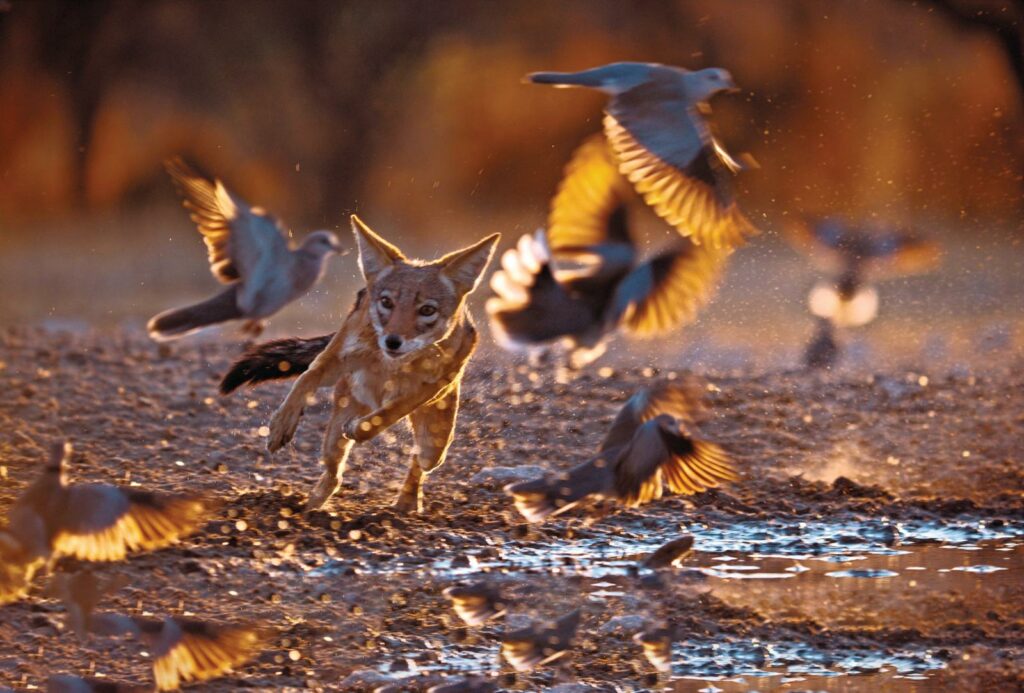
TV HIGHLIGHT OF THE MONTH
Best in show
Dogs in the Wild: Meet the Family

BBC One, from 28th December
Watch the new series live on BBC One, or catch up on BBC iPlayer
DOG LOVERS REJOICE! AT LAST, WE have a whole series devoted to the canids of our world from the BBC Studios’ Natural History Unit. Narrated by wildlife presenter and conservationist Chris Packham, the series travels the planet to meet these stunning animals.
Across the three episodes, there are beautiful characters who take turns to be centre stage. The series kicks off with the Tibetan fox. This is the world’s highest dwelling fox species and “a shapeshifter, who can hide in plain sight”. Living in the harsh environment of the Tibetan plateau, the canid must hunt pika (a small lagomorph mammal) to survive – without any tree cover to rely on to help it hunt. The species is adorable, with its comically wide head and big fluffy tail, but the series goes into cuteness overload when three young kits appear on screen, tumbling around with each other.
Other featured members of the family include the talkative group of dholes that must work together to survive in the rainforest; the tiny fennec fox that’s adapted to the harsh desert environment; and the African wild dogs that use sneezing to communicate and make decisions as a pack. The final episode focuses on the scientists working to understand and save the various members of this mammal family.
MEET THE PRODUCER
Rowan Crawford
We speak to the series producer of Dogs in the Wild: Meet the Family about making the three-part series
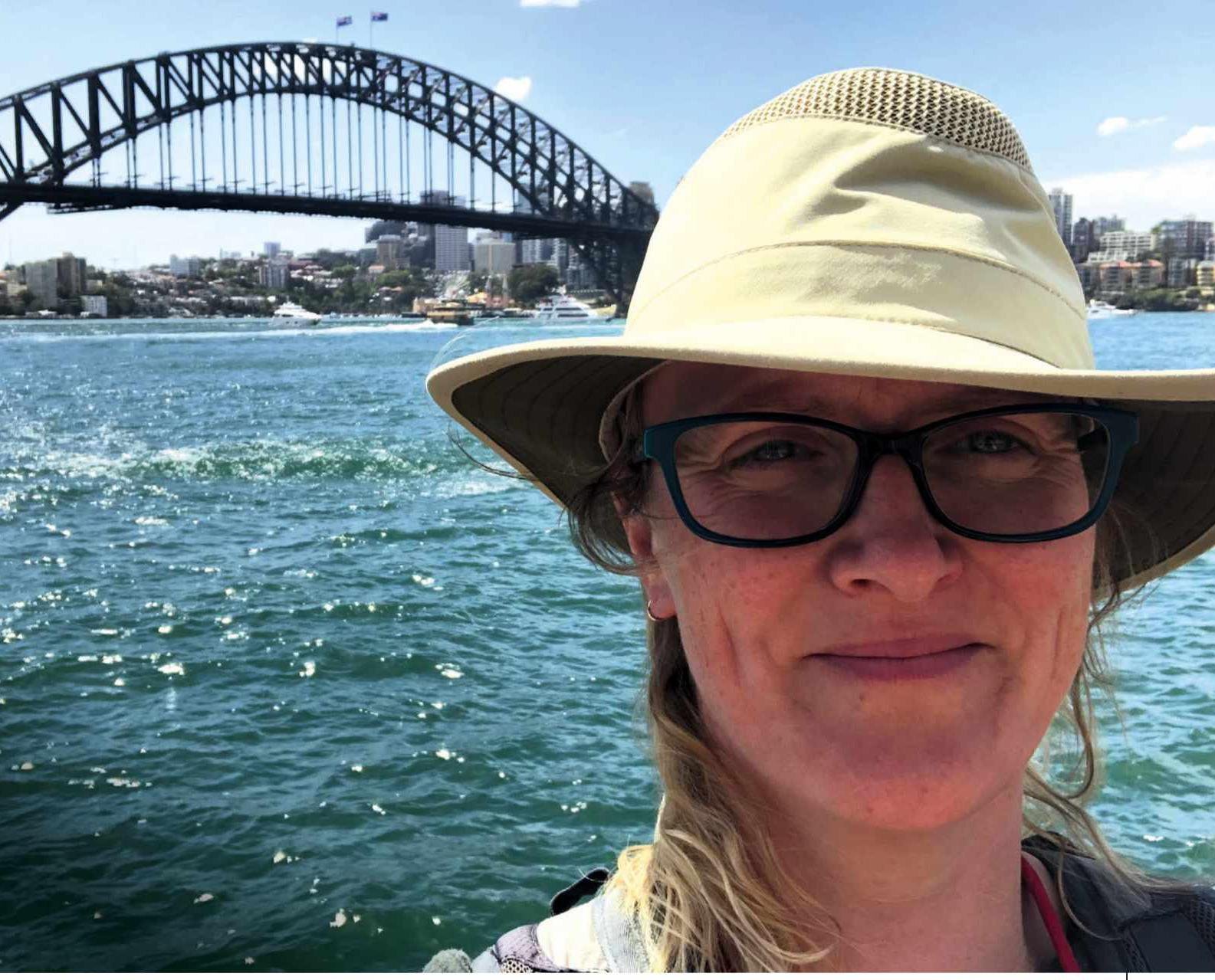
Why make a series about canids?
Never has the nation been so obsessed with dogs! Following the pandemic puppy craze, there are now more than a billion domestic dogs across the globe – making now the ideal time to delve into the world of their wild cousins. We hope to reveal where the intelligence, agility, loyalty and sheer ‘doggedness’ of the wolf in your own living room really came from!
Sadly, however, whilst domestic dogs are growing in number, our wild species are in decline. Almost a third of wild dog species are now listed as threatened or near-threatened with extinction. Some species have less than 20 individuals left in the wild. And this decline is almost always directly down to us humans.
Were there any particularly difficult sequences to film?
The hardest of all the species to film was probably the fennec fox. This is the smallest of all the dogs and lives in the blistering heat of the Sahara Desert. They are also incredibly shy and have an acute sense of smell, so even once the team had finally located a burrow, they weren’t guaranteed more than a glimpse.
It took them almost two weeks to get their first usable shot on camera, and it took all of their patience and resolve to keep going. In the end it paid off. Not only did they capture a beautiful insight into how these animals survive in one of the most inhospitable places on earth, but they also created a second sequence, revealing the devastating human impact tourism is having on this tiny animal.
Are there any memorable sequences that viewers will enjoy?
The dingo sequence in episode one, for me, is one of the most memorable – and, I think, most beautiful in the series. This is kind of a redemption story for the species. They’re not popular in Australia and generally speaking have a bad reputation, yet here we’ve shown how important they are in keeping a delicate ecosystem in balance. Their good looks, coupled with the stunning location of K’gari Island in Queensland, makes the sequence a feast for the eyes!
Another sequence that I found fascinating is the broken heart syndrome in African wild dogs story that’s in episode three. Not only is this truly surprising science, but it’s also proof that dogs have feelings. They need their family and friends – their pack – not just physically to hunt together etc, but they also need each other emotionally to survive.
PODCAST OF THE MONTH
The Whole Tooth
saveourseas.com/worldofsharks/thewholetooth

Do sharks have friends? How do they reproduce? Do they glow in the dark? Sometimes the natural world can be so full of questions it can be overwhelming! Isla Hodgson tackles some of the big questions in the Save Our Seas Foundation podcast, debunking myths and giving you the whole truth – or whole tooth. She’s joined by a series of leading marine and conservation experts to dig into the fascinating world of sharks and rays.
CHILDREN’S BOOK OF THE MONTH
2023 Nature Month-By-Month
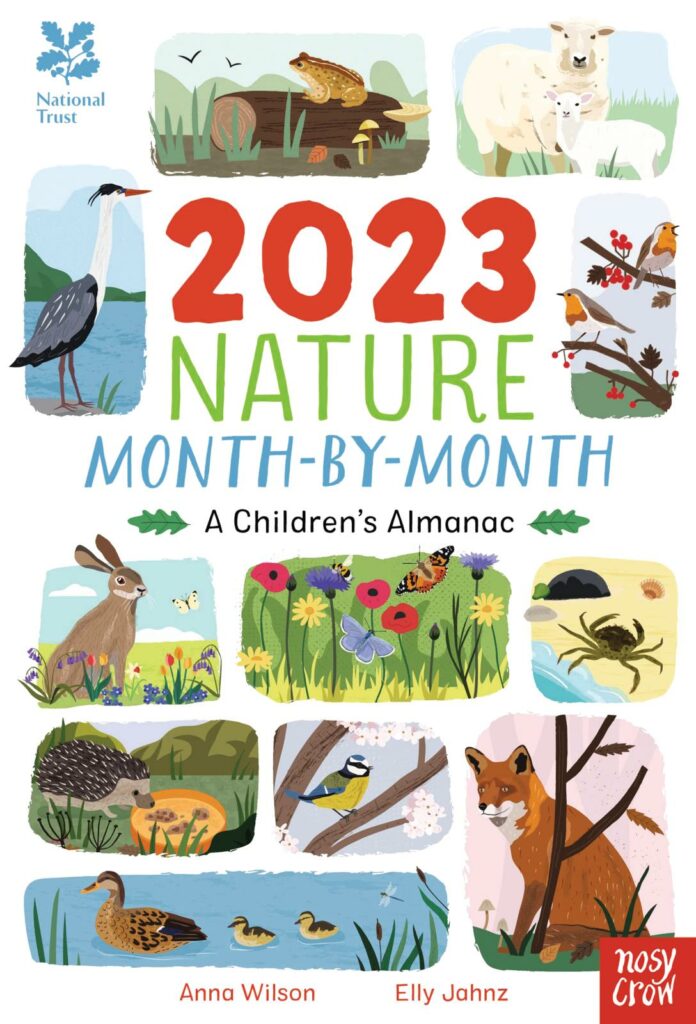
THIS IS SO MUCH MORE THAN A SIMPLE month-by-month children’s nature almanac. Produced in partnership with the National Trust, this beautifully illustrated guide to a wild 2023 is absolutely jammed full of inspiration for the month, from spotters’ guides, seasonal recipes and fascinating facts, to ideas for indoor and outdoor games, crafty projects and things to do while out and about.
But it goes deeper. Within each month, Anna Wilson explores what makes that month special – from anniversaries and the phases of the moon, to exploring how different faiths and cultures engage with the natural world. Discover how the months got their names, the religious festivals that happen around the world, and how they connect with nature – even star signs get a look-in.
Anyone with young children knows how busy the days and weeks can be, and how this makes the months and years whizz by. This is a practical guide to immersing you and your family in the here and now.
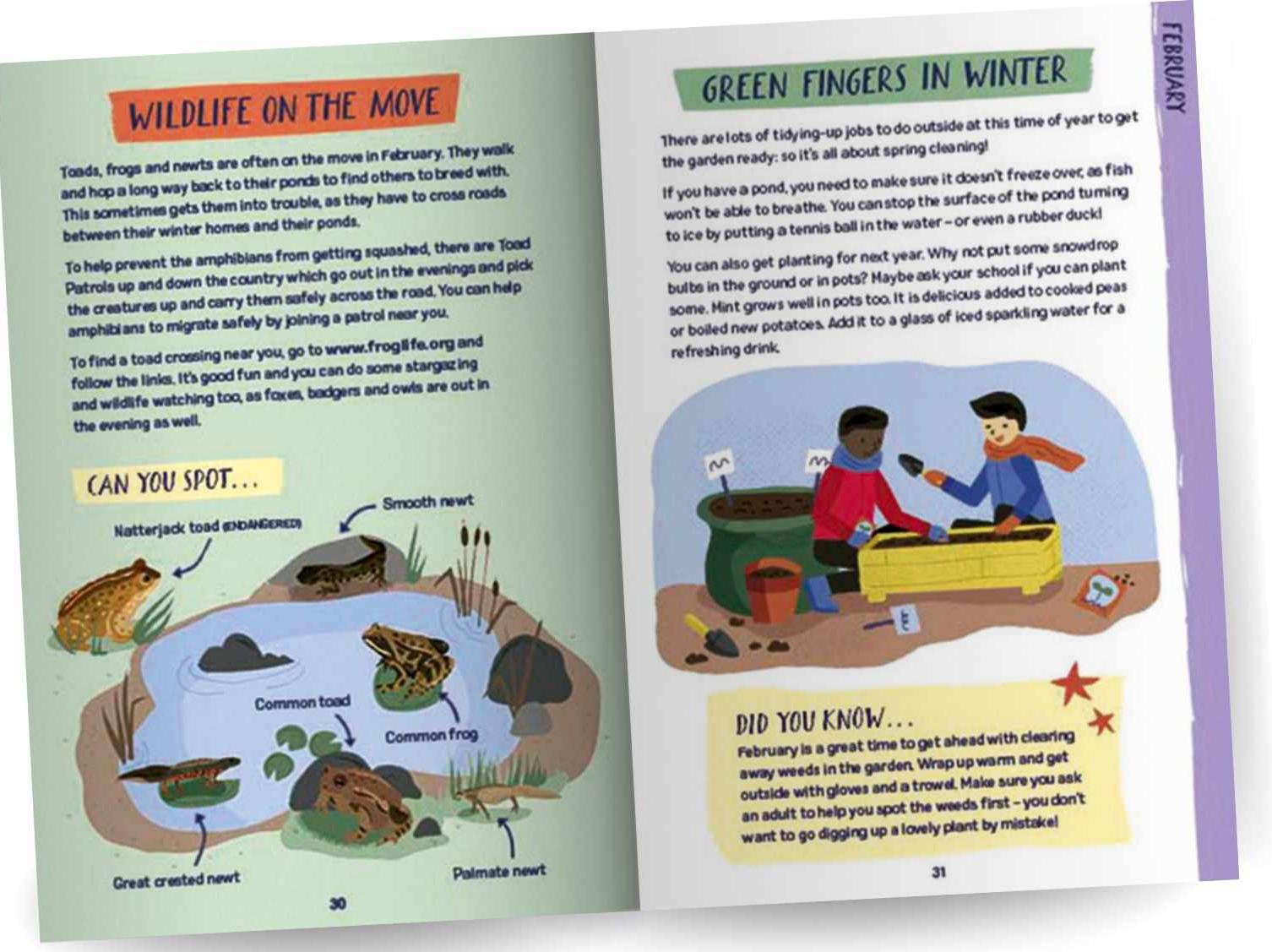
BOOKS ROUND UP
The Gardener’s Almanac

In this gardening-focused almanac, presenter, author and national treasure Alan Titchmarsh provides seasonal advice on gardening, as well as celebrating a bird and wildflower each month of the year. It’s accompanied by illustrations by Alan himself.
The History of the World in 100 Plants
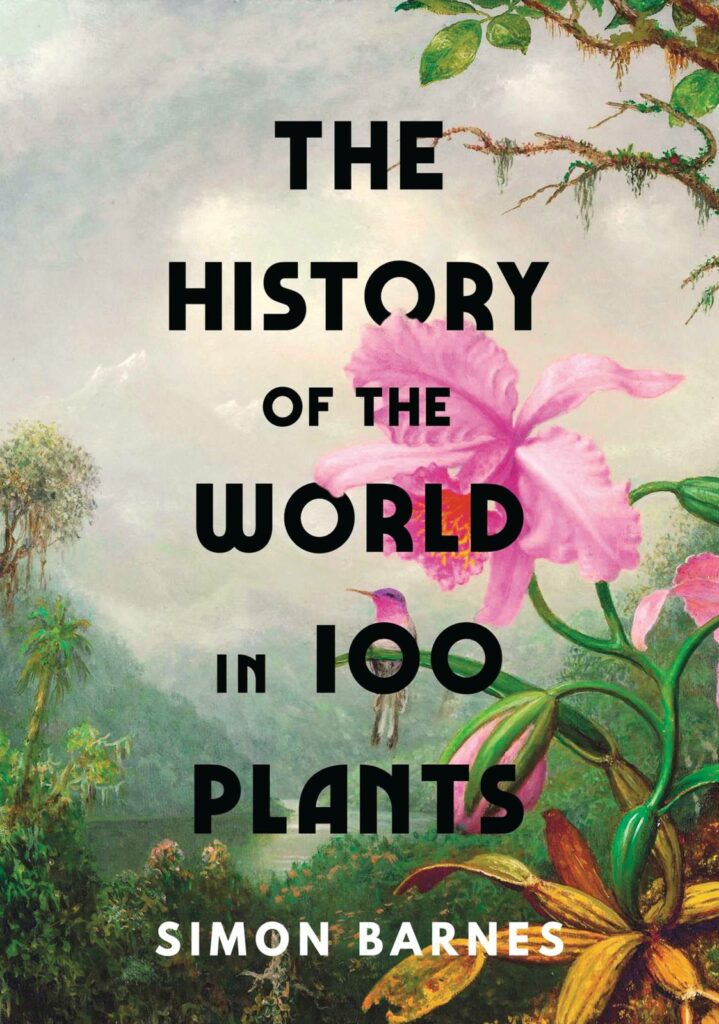
Renowned wildlife writer (and sports journalist) Simon Barnes follows on from his previous book, TheHistoryoftheWorldin100Animals, with a look at 100 fascinating plants that have impacted humanity the most, providing us with air, food, shelter, musical instruments, medicines and so much more.
Wild

Historian, author and illustrator Amy Jeffs takes the reader on a journey through the early medieval landscapes of the British countryside. Each of the seven chapters is themed – earth, fen, forest, beast, ocean, catastrophe and paradise – and combines fiction, medieval texts and reflections, all illustrated with original wood engravings. His and Am the jou the lan of countryside.
The Lost Rainforests of Britain
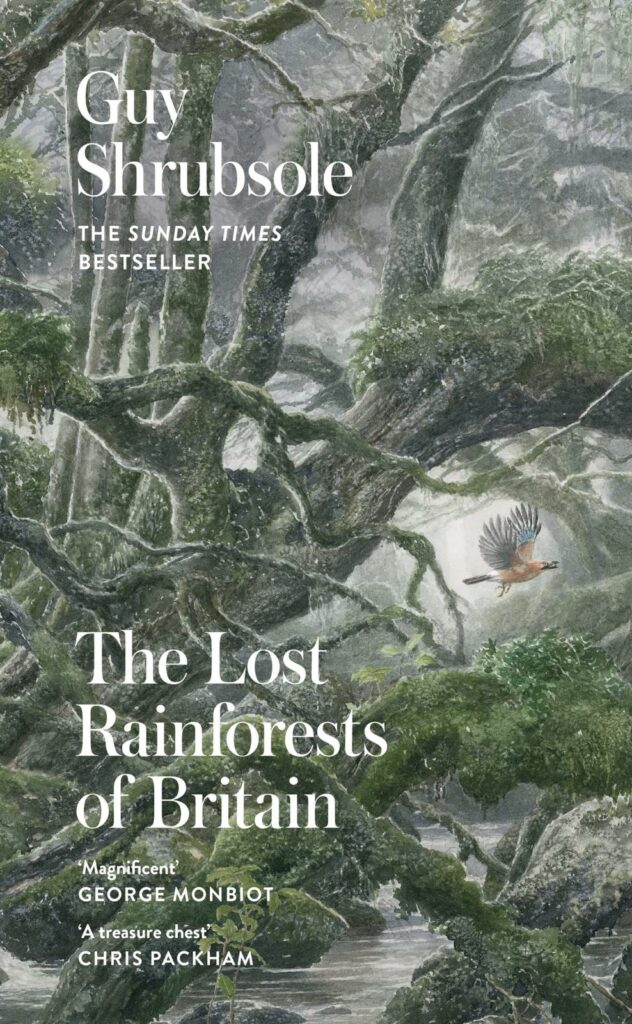
After the success of his book Who Owns England?, Guy Shrubsole has been focusing on temperate rainforest, a unique and special habitat. Once covering up to one-fifth of Britain, this wildlife-rich forest clings on in fragments, but has now been mostly lost and forgotten. Afte of h WhEngShr bee on rai uni special habitat.
ID GUIDE
Nature table treasures
The natural world is full of remarkable objects, which can connect us to the lives of wild animals, but make sure to check which ones are legal to keep. For more ID guides, visit our website: discoverwildlife.com/identify-wildlife
DEER ANTLER
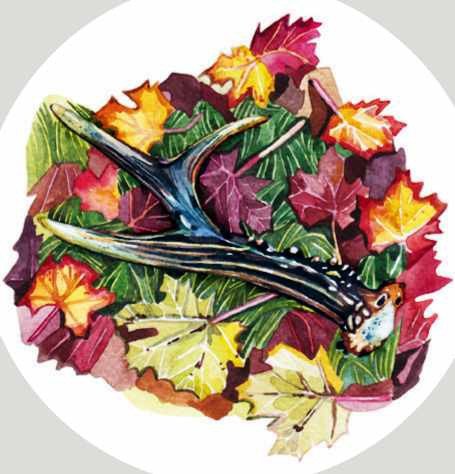
The reduced foliage in winter and early spring can help with finding cast antlers – both old and recent.
OWL PELLET

Usually found beneath roosting spots, these can be taken apart to identify remains of the owl’s prey.
WASP NEST
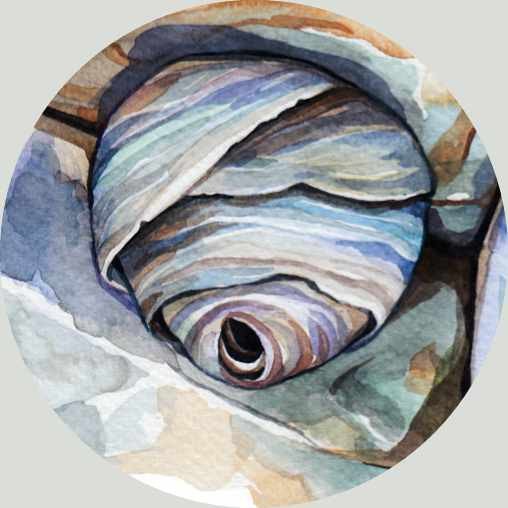
Once the breeding season is over, wasp nests are empty and can easily be taken down for a closer look.
TV HIGHLIGHT
Our Universe
Catch up on Netflix
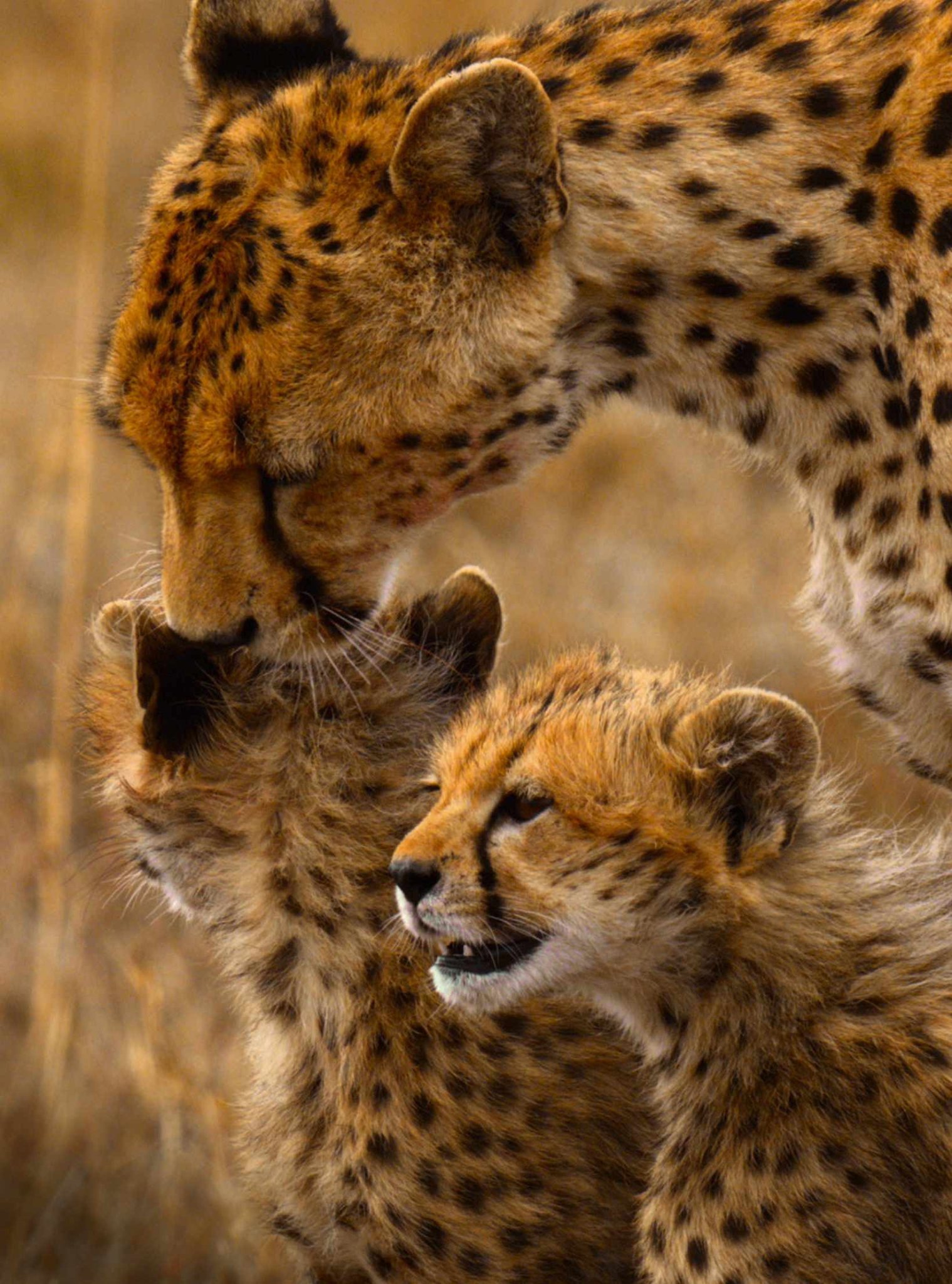
IN EARLY NOVEMBER, NETFLIX ANNOUNCED that it was expanding its natural history offering with six new documentary series to air over the next few years, including Our Planet II (narrated by Sir David Attenborough) and Life on Our Planet (narrated by Morgan Freeman) this year, Our Oceans and Our Living World in 2024, and Our Water World in 2025.
These were kicked off with Our Universe, which has been available to watch on Netflix since the end of November. Narrated by Morgan Freeman, the series is produced by BBC Studios for the streaming giant and combines wildlife footage with cosmic special effects from CGI company Lux Aeterna.
The series aims to explore the connections between the wider universe and lives on our planet. Showrunner Mike Davis says, “It’s based in real science, but it’s got a kind of fairy dust to it throughout. We’re telling this grand story that gave us a certain license to be slightly more stylised about not only the way we film, but how we compose shots.”
MEET THE VOLUNTEER
“It means a lot to be helping seahorses”
Chloe Brown spends her free time diving off the coast of Weymouth looking for seahorses.

SECONDARY SCHOOL STUDENT CHLOE BROWN volunteers for The Seahorse Trust in Dorset, alongside her father Chris Brown.
What does your volunteering involve?
We dive in seahorse survey areas to monitor their populations and behaviour in order to understand more about them. To dive with seahorses you need to have a licence, which my dad has as he belongs to The Seahorse Trust surveying team.
We always record their sex, size and identifying features – my dad takes at least two photographs of either side of their profile. We also record their depth and location, and watch their behaviour for about five minutes before leaving them.
Do you have to be careful when diving with seahorses?
We follow some simple rules, such as not using flash photography and being really careful not to damage the habitat at all, particularly the seagrass. When observing the seahorses’ behaviour, if they show signs of disturbance, such as changing colour or beginning to unwrap their tail from the seagrass, we react accordingly.
Why do you volunteer?
To help seahorses by discovering more about their life and what is important for them. It means a lot to know I’m doing my bit for seahorses, and it’s crucial that people support The Seahorse Trust.
What do you find exciting?
The science really interests me. I love that we are asking questions about the seahorses and finding out the answers through surveying. Every dive makes us ask new questions – how big are their territories, do they overlap, how do they change in the breeding season? It is amazing to be able to learn about an animal that lives so near but so many people don’t really know about. It’s also a lot of fun and very special seeing them going about their business.
What does the future hold for you?
I would like to continue with this surveying work, especially throughout the winter, even though it will be challenging. In the future, I would really like to include the shortsnouted seahorse in the surveying, and I would love to explore the secret life of undulate rays…
5 THINGS WE LOVE
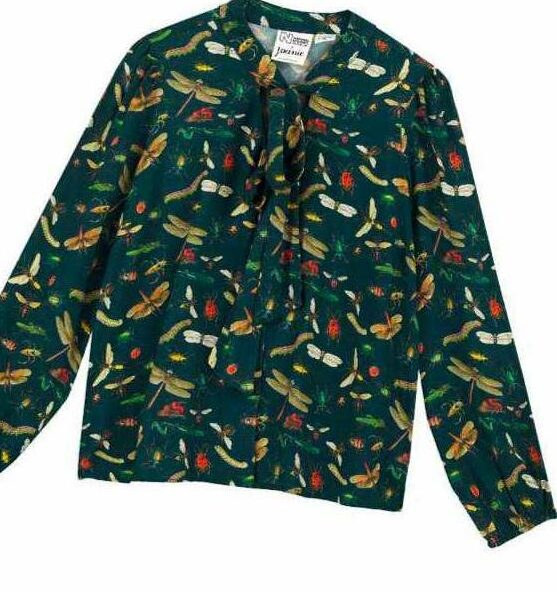
1 Natural History Museum x Joanie- Etoile arthropods print blouse £45, joanieclothing.com

2 Swallows cork clock £25, loveliga. co.uk

3 Whistler backpack 350 AW II £402.95, lowepro.com

4 Retro floral enamel mug £10.50, enamel happy.org.uk

Meadow board game £47.99, board-game.co.uk